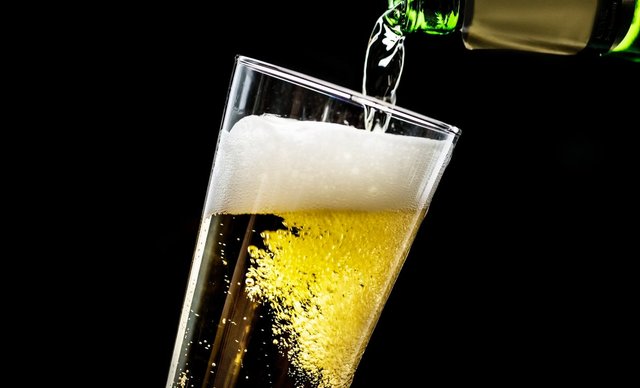
A beer’s foamy head is more than simple presentation. A beer’s head is intrinsic to the drinking experience, it’s part art and part science and it doesn’t happen accidentally…
When beer is poured, the trapped carbon dioxide forms bubbles, creating that familiar, inviting layer of foam that we call the beer’s head. But a beer’s head is much more than decoration. Each time a bubble bursts, it releases aromatic particles that enhance your beer’s smell, as well as its taste.
And beer heads differ. Different types of beer produce different levels of foam, all tempered by the brewing process and its ingredients.
The key to a beer’s ability to generate foam and retain carbonation lies in its mix of ingredients. Barley, hops and wheat contain a certain type of protein that is highly “hydrophobic.” Hydrophobic means that it repels water which also happens to be the #1 ingredient in beer.
These repelled proteins then attach themselves to the C02 bubbles, creating a coating around them and ride them to the top of the brew creating a layer of frothy foam.
Hoppy beers tend to deliver have stronger heads, thicker and more stable foam, but other components can also impact the quality of a beer’s head.
 The presence of certain metals, such as zinc, can also have a positive effect. Dark beers like stouts which rich in sugars and high in Melanoidin can deliver a thick and complex head And, the type of gas used in the beer is a factor as well with nitrogen generating a creamier texture, much like the head on a classic Guinness.
The presence of certain metals, such as zinc, can also have a positive effect. Dark beers like stouts which rich in sugars and high in Melanoidin can deliver a thick and complex head And, the type of gas used in the beer is a factor as well with nitrogen generating a creamier texture, much like the head on a classic Guinness.
Beers with a higher alcohol content tend to have less foam, as alcohol tends to break it down. And the cleanliness of the beer’s glassware can also impact a beer’s head. Residual oils (whether on a glass or your finger) can quickly break down the quality of a beer’s head.
Now on to the art of the perfect pour to maximize a beer’s head…which is far less complex than the science but just as important.
And Hood River, Oregon’s Pfriem Brewing nails the process perfectly…
“Start by tilting your glass at a 45-degree angle. Pour your beer, targeting the middle of the slope of the glass. When your glass is about halfway full, straighten it and continue to pour in the center. This technique helps control the formation of the foam, giving you a just-right head on your beer – not too much, and not too little.”
“Remember that the glass you use can influence head formation and retention. A tall, narrow glass is often a good choice as it reduces the ability for CO2 to escape.”
###
 American Craft Beer The Best Craft Beer, Breweries, Bars, Brewpubs, Beer Stores, And Restaurants Serving Serious Beer.
American Craft Beer The Best Craft Beer, Breweries, Bars, Brewpubs, Beer Stores, And Restaurants Serving Serious Beer.
